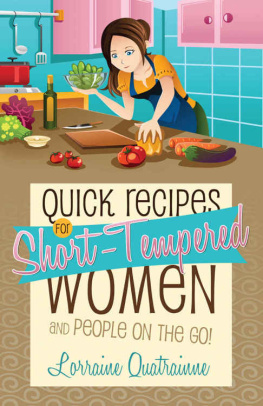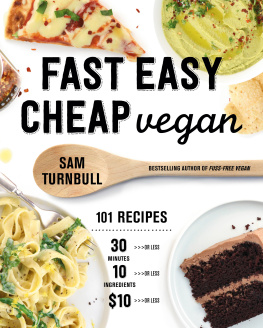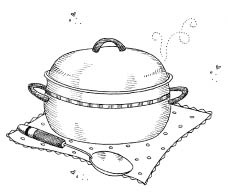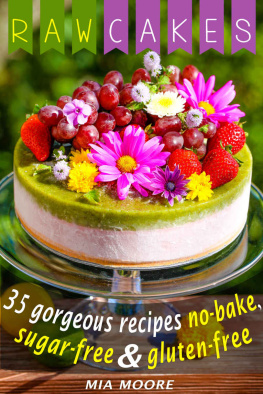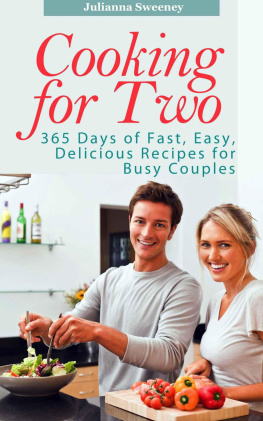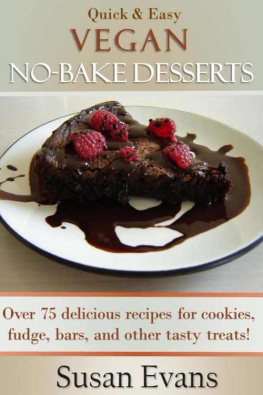This book is dedicated to my immediate family for their love and support over the years. My husband, late father, my mother, brother, sister-in-law, and cousins have collectively been a great source of strength and inspiration more times than I could ever remember.
This book would not have been possible without the food consumption and foraging skills of my husband. He is always eager to try the next gastronomic experiment and manages to chomp his way through numerous meals. I look forward to his honest feedback, and he is invaluable in discerning disasters. He gobbles up every meal and is a willing participant in the preparation. I always know when he truly likes a meal, because when he finishes he will pat his stomach with both hands and say, I need to lose some weight.
If you picked up this book and are reading this sentence, you are a very busy woman. You are looking for new ways to manage your very active life and the lives of your family, making sure they have healthy and flavorful meals. But, you do not want to be spending hours in the kitchen. Meal planning, preparation, and cleanup can be time consuming. This little book will help you take control of the time you spend on those tasks. The recipes are designed to be quick, tasty, and wholesome. Meal preparation will be faster, grocery shopping more organized, and meal time more enjoyable for everyone, including yourself!
This little book will also help you relieve the stress of meal planning and preparation; if they are streamlined, then it follows that cleanup will also be streamlined, which will make your life easier and more relaxed. Not only will you have more free time for your family and yourself, but you will also have more free time for fun! Weekdays and weekends will be less rushed and more enjoyable.
You will find a section titled Tips and Hints to help streamline meal preparation. The four chaptersMain Entrees, Side Dishes, Soups, and Treatscontain recipes designed to save you time. In the print version, you will also find an accompanying graphic with each recipe. I am hoping the graphics will trigger your imagination and help you discover new ways to spend your newly acquired free time. Sleeping always seems to be the first choice, but lets go beyond sleeping. It is a great, big, wonderful world out there, and it is calling your name.
Tips and Hints
Cooking quickly is the goal, so lets begin by gaining control over the time you spend on meal planning and preparation. This chapter contains many suggestions that will help you plan and prepare in a more organized manner. Take some time and thoroughly read this section, and you will see that when you are organized up front, you can create tasty and excellent meals in minutes.
After a trip to the grocery store, before freezing divide any uncooked ground meat into one-pound bags. By doing so you will have pre-measured packages of meat ready for any recipe. The package weights do not have to be exact; your best guess is fine. If you need one pound of meat, use one bag; two pounds, two bags; and so on. You wont be thawing more meat than you need.
If you use ground meat to make chili, sloppy joes, spaghetti, pizza, etc., you may want to brown the meat with the appropriate spices and/or diced onions before freezing in the one-pound bags. Be sure to label the bags with the intended meal name. When I prepare meat packages like this, I do the browning for 4 to 5 meals in one weekend session. Then, after a quick microwave thaw, these packages will be the start of a speedy meal.
If you regularly use sliced sausage in a recipe, consider slicing the sausage before you freeze it. Then it is a quick microwave thaw to begin the recipe. You can slice and freeze 2 to 3 sausages for future meal planning.
If you are making a recipe that calls for sliced potatoes, use whole canned potatoes unless the recipe states otherwise. I use the inexpensive store-brand potatoes and slice them myself. If you use pre-sliced canned potatoes, they may get mushy during the cooking process and have the texture of oatmeal.
If you are making a recipe that calls for vegetables you dont use regularly, for example green peppers, buy them on sale, dice them, and freeze the equivalent of 2 cups at a time. If you freeze more than about 2 cups, you may not use them in a timely manner, risking freezer burn and subsequent waste.
Always keep several packages of your familys favorite frozen cut vegetables in the freezer. Packaged frozen vegetables can be a great time saver. Instead of having to clean and cut fresh vegetables, frozen vegetables are ready for cooking in the time it takes to open the bag.
You may to want to make one exception to the frozen vegetable suggestion. For my familys taste, we select the freshest red onions we can find and dice/chop them ourselves. We prefer the red onion flavor to frozen onion. There are different types of onions and you may have a favorite one. If you choose to dice/chop your own, be sure to freeze the equivalent of 2 fresh onions and store them in individual 1-pound bags.
Many recipes call for ketchup, tomato sauce, or tomato paste. Instead, use the same measurement of your favorite barbeque sauce. This is a great chance to try a new flavor!
If you can afford to buy organic food, you may want to use it as often as you can. Having access to local organic produce via a farmers market or other means is a great way to ensure that family members are getting very fresh and nutritious produce. They may also notice a difference in the taste.
If you cannot afford organic food, it is not available, or you choose not to buy it, select the freshest produce possible. If a sell-buy date is available, use it as a gauge for produce freshness.
Family members may have sensitivities to dairy products, so recipes that list milk as an ingredient may cause a problem. Instead of using dairy milk, use a wide variety of grain- or nut-based non-dairy beverages that can be used for cooking. For example, rice, oat, hemp, almond, hazelnut, cashew, and coconut milks are available as substitutes. If you would like to slightly thicken the grain or nut milks, stir in a very small amount of flour.
When you store diced/chopped foods in bags for freezing, the food may freeze together into one large lump. Working with the frozen lump is not easy, but there is a very straightforward way to break it apart. Select a hard countertop or other hard, non-breakable surface in the kitchen and bang or throw the bag against the surface 2 or 3 times until the food breaks apart. This process has always worked for me and is very quick.
If a recipe calls for sliced or diced cabbage, you may want to plan ahead and add a pre-cut coleslaw mix package to your shopping list. These packages are great time savers because there are several types and colors of cabbage in one bag. The mix works very well for soups, stews, sauting, or as a simple side dish. Cabbage is difficult to cut, and this mix is a great help.
Keeping track of opened food products like mayonnaise, lunch meat, tuna salad, or even milk can be confusing at best. Here is a simple solution. When a food is opened, put a date tag on it. A date tag is a dot sticker or a small label (1/2 by 3/4 inchesgarage-sale-sticker size) with the date as MM/DD. Date tags can also be used on frozen food to avoid freezer burn. If you are opening products with a shelf life of months or years like spices, the date should include the year: MM/DD/YY. Date tags are inexpensive, and you will know the exact date the product was opened. You will no longer be gazing into what appears to be a prehistoric plastic squeeze bottle of mustard and wondering if you should put it on the table. Sniffing is not good enough! When you use the tags, foods will be used in a timely manner and waste will be avoided. Some quart- and gallon-size freezer bags have space for you to write on and even change the date as you use up the contents.

